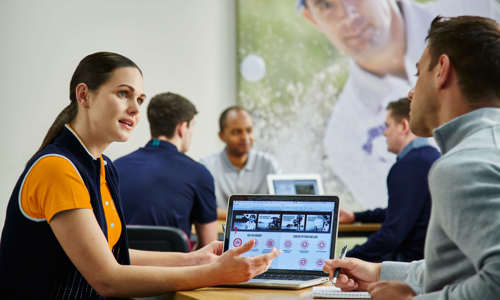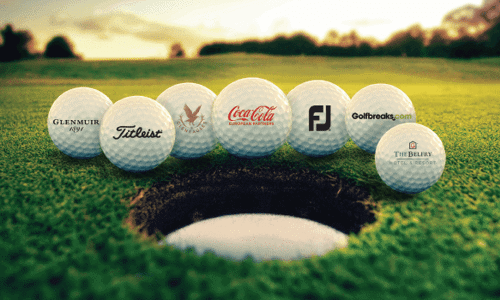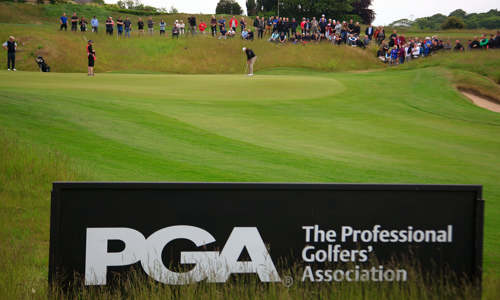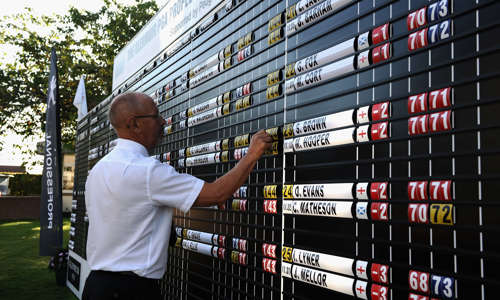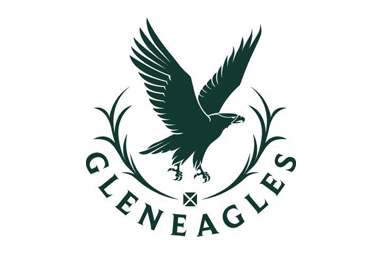The mental side of golf is not the exclusive preserve of a specialised professional. Rather, it’s a key component of a PGA Professional’s skillset, say Dave Collins, Steven Orr and Howie Carson in Part 2 of their three-part series.
If you've not yet read part 1, click here.
We are going to offer more detail about how skills can be developed and deployed across the first three stages of our five-stage model:
The five lives of the high-level golfer
- 5–10 years: building the base
- 11–17 years: equipping for the journey
- 16–21 years: reaching the peak/getting on tour
- 21–35 years: staying at the top
- 45+ years: the move to seniors golf and living at the top
This means that we are covering the broad range of development that needs to take place from age five to 21 years. As you can appreciate, that’s a pretty big range, with lots of changes going on simultaneously, including biological (such as puberty); psychological (such as adolescence); and social (such as the switch from listening to mum and dad through to a preference for your friends, plus a possible swing back later!).
Our point here is that what is developed, plus how and when, will need some careful thought, especially as players will be very varied both within these stages and between each other.
In short, look at each player individually, rather than thinking ‘this is an appropriate idea for 10-year-olds’. Of interest, our research on monozygotic (identical) twins, living in the same house and practising sport with the same coaches, has shown that, even here, individual differences can be considerable. Therefore, we cannot stress this need for individualisation enough!
Finally, let’s remind you that our progressions and practices across the five stages are built on using the Psychological Characteristics of Developing Excellence or PCDEs.
The Psychological Characteristics of Developing Excellence (PCDEs)
- Commitment
- Focus & distraction control
- Realistic performance evaluation
- Self-regulation
- Role clarity
- Planning & self-organisation
- Goal setting & self-reward
- Quality practice
- Effective imagery
- Seeking and using social support
5–10 years: building the base
So, with that call for individualisation firmly established, let’s start with the first stage. Many ask about when mental skills should be taught. Well for us, that is simple!
Old enough to worry = old enough to do something about it.
At this age and stage, that is going to be very coach-led of course. So, you need to carefully observe and talk, identify issues, then openly discuss ways in which these can be addressed through the PCDEs. We are talking about the core skills of self-regulation but also characteristics like seeking and using social support and realistic evaluation.
All these are very effective when the coach ‘models’ the behaviours: in other words, you want to live and demonstrate how you would like your players to be.
Also, as technique develops, using imagery will be important in being able to feel the difference between a current technique and a new technique the coach is trying to move them towards.
In each of these cases we are developing both golf technique and golf-specific mental skills (both of which are useful in combatting worrying nerves). Do this by targeting outcomes then setting some realistic goals with your players. In other words: “That’s where I want to hit the ball to, and this is how I’m going to do it.”
Finally, there is a real need to involve and use parents – selling PCDEs as generic skills that can be transferred across sports settings, used at school and even in social settings.
This ‘developing excellence’ agenda is both educationally sound and very marketable. Indeed, we are currently teaching the PCDEs in schools as well as in other sports academies. This makes a valuable addition to your deliverables beyond golf skills and is good for the young player, even if they drop out of the game or remain a recreational teen or twenties handicapper.
Let’s be clear, while we would like to think that we could retain every golfer in the game as a lifelong player, that just is not realistic.
Supporting more people to be lifelong participants in sport however, due to a positive experience in golf and the development of PCDEs at an appropriate stage, is more achievable.
Starting early with these skills is ideal, especially as it shows the young player that the pressures can be handled. This feeling of greater control can make a major contribution to their mental health as well.
11–17 years: equipping for the journey
Quite apart from the golf, the ravages of adolescence provide some significant changes, often with associated challenges.
Increased volatility, the need for autonomy and increasing pressures from social interests can derail even the strongest of high-potential (protégé) players.
From the golf perspective, a skilled young player will often experience being selected for a squad in this phase. Whether county, regional and/ or national level, this also brings a lot of challenges. New coaches, more demands on time, playing for teams, getting on with other teammates and more.
Also in this phase, the player can often have their first encounter with significant failure, such as de-selection, missing cuts, losing tournaments and not qualifying for key events, to name but a few.
This cocktail of challenges needs addressing, ideally proactively (with the start from the previous stage) and also overtly.
Many adolescent players will avoid talking about their felt pressures while, at the same time, getting waves of frustration and aggression at their apparent inability to play well.
All this makes the need for individualising the process even more important. Good psychology and, we suggest, good coaching starts with a careful and considered evaluation of each player’s strengths and areas for development.
Usually referred to as a case conceptualisation, this process involves a lot more than just asking the player: good practice uses a ‘triangulation’ of observation (for example, in what contexts does the game suffer?), questioning and (a clever one this) asking the player how they think another player feels.
So, standing and watching the wheels come off, even on TV, you ask the player why they think this happened or how they think the observed player is feeling. They will often respond by unconsciously projecting their own feelings on to the player they are watching, giving you another source of insight. You might even use a carefully developed and validated questionnaire, such as our own PCDEQ!
Consistent with our message of looking at each player (case) individually, this process of case conceptualisation can help the coach manage potential biases and heuristics that they hold around player development. Careful evaluation, planning and ongoing refinement will ensure the ‘best bang for your buck’.
Finally, note that it is so much more effective if these issues are addressed in advance, rather than waiting for them to occur.
Adolescence represents a changing interface, a shift in the balance of power, which you can exploit by encouraging other contributions as well as from yourself.
Asking peers for informal competition offers the player a chance to observe other solutions. Of course, some might be bad, but even that can be useful as a topic for conversations with yourself. Seeking guidance from older and more experienced players is also useful and to be encouraged.
For instance, this might be facilitated during team matches when playing foursomes by pairing the young player with a suitably matched older playing partner who is open and willing to share their thoughts in a positive way (eg in a mentoring capacity).
In addition to using social support, role clarity, goal setting and self-reward and commitment can be developed.
commitment can be developed. Players should know exactly what is needed in different situations and who to ask for help and advice. This increases both autonomy but also feelings of self-control.
Goals should be mostly process focussed: building tactical acumen by performing in various contexts (for example, holding on to a good score in the closing holes) and, of course, being able to evaluate your performance realistically and self-reward appropriately.
Playing away courses for the first time, or in difficult weather conditions, as the player’s game begins to get more serious, means that player needs to employ a more problem-focussed approach to their game, thinking ahead towards what they will do and how they will respond as well as reflecting back on what they did.
In simple terms, performances are rarely completely great or totally hopeless – does the player appreciate these nuances and react accordingly, and can the coach help the player interpret their performance accordingly? Finally, encourage appropriate behaviours and commitment to facilitate this progression in the game – taking responsibility for your own performance.
Practising to a schedule, having your bag sorted well in advance, cleaning your own clubs and shoes and responding to coaches’ and managers’ requests on time are all indicators of committed behaviour, which should be the standard expected.
16–21 years: reaching the peak/getting on tour
Aims for this phase involve an even greater autonomy and taking responsibility by the player. In simple terms, flying solo but with regular checks, like a pilot with simulator use. This will include critical reviews, feedback and action points with follow up checks.
Importantly, however, the review process must address all the elements of performance: once again, a magic five! Technical and tactical - the traditional focus of the golf pro- must always be supplemented by mental, physical and lifestyle. Weaknesses in one will often serve to derail a career before it has really got started.
As such, work at this level should be fully integrated, with contributions across the spectrum, whether from specialist support practitioners or the PGA golf coach.
An ongoing focus on quality practice will help the player to achieve and develop – making best use of what they have already learned while continuing to build.
By this stage, the player should be aware of, have experienced and be receiving ongoing coaching in all 10 of the PCDEs, with bespoke two-to-three skill combinations being used to address specific issues.
As throughout, this will best be integrated into golf practice, with specific deployments planned for upcoming challenges.
Finally, note that the need to encourage and facilitate transfers from golf to life and vice versa.
After all, focus and distraction control and commitment should be features of the young pro’s life off course as much as on it.
This ‘second pair of eyes’ facilitates professional conversations which can uncover and proactively address player issues.
It also adds some very necessary variety into what can be a very intense - and even claustrophobic - relationship at the top level.
Such approaches are common in many sports and in psychology this arrangement is known as ‘peer supervision’.
Of course, using a team of coaches is very common at the highest levels of golf (putting, short game, performance coach etc) and all bring their specialist viewpoints to bear.
It is just important for one coach to take the lead, calling the team together at regular intervals to maintain a common direction and motivation. Variation across the week/month/season is also important, with an appropriate contextual balance across style and scheduling: balancing on-course, practice-course and off-course work.
Finally, if seeking and using other specialist input, what should you expect? Sports science staff are often as guilty as coaches in monopolising players – after all, “success has a thousand fathers” and everyone likes to be associated with success.
Effective use will be properly monitored however, and work towards well established and agreed goals. Oh yes – and please look for qualifications, professional training and experience as minimum standards.
There are too many social media gurus, mind coaches and ex-professionals out there – all people who may well have done well themselves but who might lack the knowledge and skills to help others


